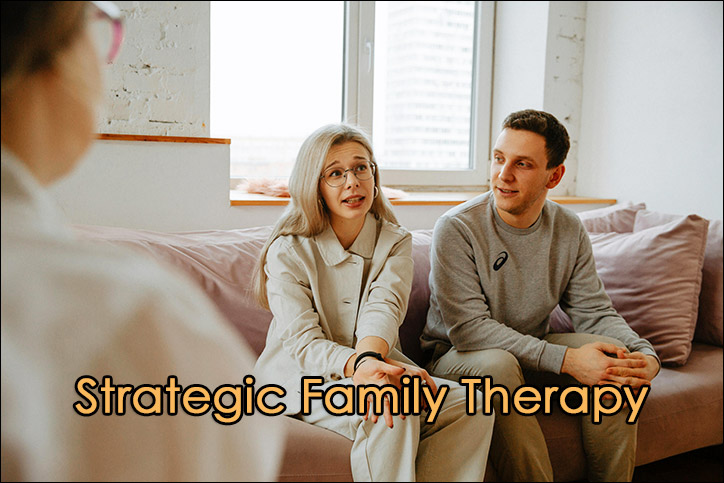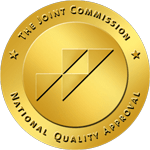Table of Contents
Strategic Family Therapy techniques and concepts are focused on providing solutions within a structured environment to address dysfunctional and unhealthy behaviors.
There is no strict definition or set of characteristics for “a family.” A family can be young or old, big or small, blended, or adopted.
A family can also be weak or strong, but sometimes it needs a guide to help family members identify their strengths, weaknesses, abilities, and areas that need improvement.
When challenges arise, Strategic Family Therapy techniques can help families get back on the road to a supportive and loving relationship.
Though the names might sound familiar, Strategic Family Therapy is entirely different from Internal Family Systems Therapy.
What is Strategic Family Therapy?
Strategic Family Therapy (SFT) is an evidence-based treatment method that promotes positive relationships and behavioral changes within a family.
It was developed in the 1970s by Jay Haley and Cloe Madanes to identify and improve unhealthy issues that may be causing dysfunctional behavior among some family members.
SFT combines strategic therapy and family systems therapy with the idea of the family as a unit, and the belief that an outside advocate is needed to help create a strategy the family can follow to achieve success.
The strategic family therapist is not concerned with the origin of family dysfunction, but instead focuses on setting a concise goal with a well thought out plan that will lead to resolving the problems.
Think of a strategic family therapist as the coach of an athletic team or a foreman on a worksite. The athletes have the skills to win a game and construction workers know how to build a house. But without a leader with a clear game plan or blueprints, everyone just hopes for the best.
Informal Steps in Strategic Family Therapy
Just as a family is dynamic, a strategic family plan must be somewhat fluid and flexible. A therapist will consider the following steps:
- Identify the family dynamic issues
- Determine which problems are solvable through SFT
- Set Strategic Family Therapy goals
- Develop a plan to meet the goals
- Review the progress
- Evaluate the outcome
One of the key differences with strategic therapy is that the therapist takes the lead role and sets and enforces the plan.
Family homework is assigned, sometimes employing paradoxical procedures which may seem to be contrary to the goals, but they actually help to accomplish them.
Goal of Strategic Family Therapy
The main goal of Strategic Family Therapy is to improve the family dynamics and functioning by changing negative interactions and communication.
Some of the Objectives of SFT Include:
- Improve communication among family members
- Strengthen the family bond
- Create a supportive environment
- Establish boundaries
- Reduce conflicts
- Promote healthy behaviors
- Develop stronger relationships
- Overcome challenges
- Reinforce empathy and understanding
The family will usually come to Strategic Family Therapy with an idea of what they want to accomplish. But after identifying the family dynamics and dysfunctions, the therapist may set different goals.
Some improvements a therapist hopes you take away from the program are:
- Less restrictive family interactions
- Conflict resolution skills
- Ability to turn negative situations into positive solutions
- Self-sustaining changes
- Resolution of damaging behaviors or negative symptoms like substance abuse, depression, anxiety, and others
Strategic Family Therapy Concepts
There are several concepts of Strategic Family Therapy that make it unique and different from other therapeutic interventions.
SFT Concepts Include:
1. Family Systems Theory
Family Systems Theory is a concept of SFT that views a family as an interconnected system, and the behavior of each family member has an impact on every other person in the family.
2. Strategic Problem-Focused Approach
Instead of identifying the past cause or source of an issue, like other types of therapy, SFT focuses on finding solutions for the current problems.
3. Brief Time-Limited Intervention
SFT is designed to be a brief, time-limited intervention that offers a solution that can be implemented quickly and build on the outcome.
4. Therapist Takes an Active Role
The Strategic Family Therapist takes an active role in planning, assigning work to be done, and guiding family members throughout the process.
Strategic Family Therapy Techniques
There are a number of Strategic Family Therapy techniques used to create change and improvement.
1. Joining
Joining is a technique used by the SFT therapist to build trust, observe the family dynamics, and have a better understanding of their problems and needs.
2. Tracking and Diagnosis
The therapist observes and tracks the family’s patterns of interaction and provides a diagnosis of problematic behaviors to be modified.
3. Restructuring or Reframing
Restructuring or reframing is a Strategic Family Therapy technique to change the family’s perception of problem behaviors and interactions to promote change.
4. Task Assignments
The therapist assigns family members tasks related to behaviors to work on at home between therapy sessions.
5. Paradoxical Interventions
Paradoxical interventions are assigned tasks that may seem contrary to the goals, but they can be effective for promoting change.
Examples would be to exaggerate a current problem, or ignore it altogether, with the objective of gaining a better understanding of the issue and viewing it in a new light.
SFT Therapy works much differently than cognitive behavioral therapy techniques and other one-one-one treatment methods.
Pros and Cons of Strategic Family Therapy
Like with other types of therapy, there are specific pros and cons of Strategic Family Therapy. Understanding its strengths and weaknesses can help families decide if it is right for them.
Strengths of SFT Therapy
- Time-Limited brief approach offers quick results and faster improvements
- Flexible therapy that is effective for a variety of family styles and issues
- Solutions Focused intervention that aims to solve problems within family relationships
- Structured approach makes it easy for families to understand the goals
- Emphasizes the Present rather than the past
- Improves Communication and relationships between family members
- Promotes Participation for both the family and the therapist
Drawbacks of SFT Therapy
- Short Time Frame may not adequately address problems requiring more attention
- Full Participation is required, and some family members may be resistant to participating
- Limited Scope might not fully address complex mental health issues
- Requires a Significant Time Commitment to assignments, even though it is considered a brief and limited-time intervention
- Possibility of Conflict with some family members who feel it is confrontational
Strategic Family Therapy techniques and concepts have shown to be effective for addressing challenges that may be causing unhealthy behaviors for one or more family members.
It is beneficial for improving communication, strengthening relationships, and promoting healing through problem solving solutions.
It’s necessary to understand the advantages and disadvantages of SFT to identify if it is an appropriate therapy approach for each person.





